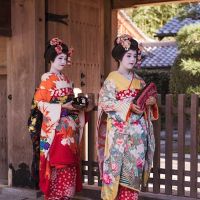Maiko Fashion Through the Seasons: A Year of Traditional Beauty
S-fleage
S-fleage is a Kyoto-based company. We are proud to introduce the charms of Kyoto to the world. We hope this article will help you to experience Kyoto.
Latest posts by S-fleage (see all)
The Maiko, an apprentice Geisha, embodies the essence of Japanese elegance and tradition.
Her attire and hairstyles change with the seasons, reflecting the natural beauty and cultural heritage of Japan.
Each season brings unique styles, festivals, and customs that highlight the Maiko’s grace and artistry.
Contents
History of Maiko
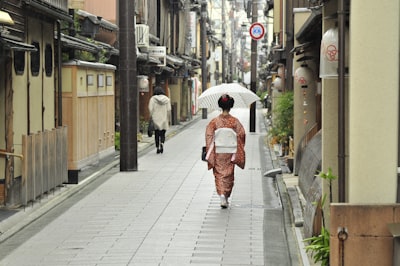
Maiko, or apprentice geisha, have been an iconic part of Kyoto’s cultural landscape for centuries.
Their origins can be traced back to the Edo period (1603-1868) when young girls began serving tea to travelers around Yasaka Shrine.
Initially, mizuchaya (tea houses) served only tea and dango (rice dumplings), but eventually, they began offering sake and food as well.
The young women working there started to perform shamisen music and dances, imitating Kabuki theater.
Today, maiko continue to train rigorously in traditional arts such as dance, music, and tea ceremony, preserving centuries-old customs while adapting to modern times.
Spring: Blossoms and Renewal

In spring, a Maiko’s attire reflects the vibrant renewal of nature, reminiscent of cherry blossoms in full bloom.
They wear colorful kimono adorned with floral patterns, symbolizing the season’s beauty.
Their hairstyles are decorated with seasonal hairpins featuring pink and white flowers.
Events such as the Miyagawa Odori, Hanami parties, and the Aoi Matsuri in April celebrate the splendor of spring.
Description of spring attire and hairstyles for Maiko
In spring, a Maiko’s attire is characterized by vivid colors and floral motifs, reflecting the full bloom of cherry blossoms.
Their kimono are often adorned with images of sakura, peonies, and other spring flowers, symbolizing new beginnings and renewal.
Hairstyles like “Wareshinobu” are beautifully adorned with delicate seasonal hairpins featuring pink and white flowers, celebrating the beauty of spring.
In March, hairpins are decorated with yellow canola flowers and peach blossoms, welcoming the warmer weather, with butterflies fluttering as spring fully arrives.
In April, cherry blossoms, a symbol of Japan, take center stage.
Senior Maiko enhance the spring ambiance by incorporating not only cherry blossoms but also large butterflies into their hairstyles.
Key events and festivals in spring
Spring is a season of celebration, with events like the annual Miyagawa Odori, a stage performance that showcases the talents of Maiko and Geiko, held throughout April.
This event is a highlight of the spring season, attracting audiences from around the world.
Other notable events include Hanami parties, where people gather to enjoy the cherry blossoms, and the grand procession of the Aoi Matsuri, one of Kyoto’s oldest festivals, held in May.
During Setsubun, there is a custom of dressing up in elaborate costumes known as “Obake” to ward off evil spirits.
Special customs and traditions during this season
In spring, Maiko participate in various customs and traditions, such as tea ceremonies held under cherry trees.
They also engage in seasonal rituals like Hatsuyume (the first dream of the year) and Setsubun, where beans are scattered to drive away evil spirits and invite good fortune.
These customs are deeply rooted in Japanese culture, symbolizing renewal and hope for the future.
Summer: Cool and Elegant
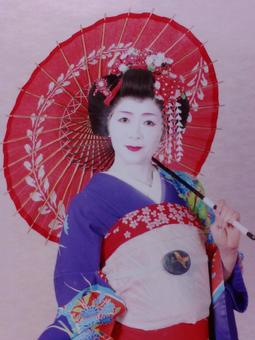
In summer, a Maiko’s attire is adorned with soft colors and summer floral patterns.
Hairstyles become simpler, highlighted by hairpins featuring willow leaves or hydrangeas.
The season’s highlights include the Gion Matsuri in July and the Daimonji Gozan Okuribi in August, celebrated alongside traditions such as evening performances at teahouses.
Description of summer attire and hairstyles for Maiko
In summer, a Maiko’s attire shifts to lighter fabrics and cooler shades, with kimono made of silk or cotton to help alleviate the heat.
The colors are softer, featuring patterns of summer flowers such as irises and wisteria.
Hairpins also showcase colorful wisteria flowers, and unique designs like large irises are used as “Kawari Kanzashi” (special seasonal hairpins).
During the rainy season in June, the green willow leaves and large, round hydrangeas stand out against the rainy skies.
In July, Kyoto becomes immersed in the Gion Matsuri, and Maiko wear hairpins related to the festival.
Senior Maiko have the privilege of wearing the “Katsuyama” hairstyle exclusively during the Gion Matsuri.
In August, the hairpins feature motifs that evoke a sense of coolness, such as pampas grass, morning glories, fireworks, and fans.
Key events and festivals in summer
Summer is marked by vibrant festivals, beginning with the “Miyako no Nigiwai,” a joint performance by the five Kagai (geisha districts) held in late June.
One of the most famous festivals is the Gion Matsuri, held in July, which features grand parades and traditional music, bringing life to the streets of Kyoto.
Another significant event is the Daimonji Gozan Okuribi in August, where large characters are set ablaze on the mountains surrounding the city to guide the spirits of the deceased to the afterlife.
Special customs and traditions during this season
As part of summer traditions, Maiko participate in various local festivals.
Additionally, the traditional dance and music performances at teahouses offer a respite from the summer heat.
August 1st marks “Hassaku,” a special occasion where Maiko dress in formal attire and visit teahouses to express their gratitude to those who have supported them throughout the year.
Autumn: Rich and Vibrant
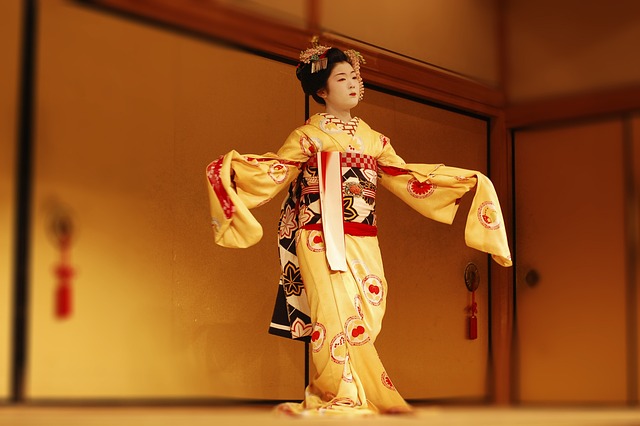
In autumn, a Maiko’s kimono features rich, warm hues with patterns of autumn leaves and chrysanthemums, reflecting the vibrant autumn foliage.
Her hairstyle is adorned with hairpins that mimic the leaves of the season.
Major events include the Jidai Matsuri and Gion Odori, along with customs such as moon-viewing and enjoying seasonal Japanese sweets during tea ceremonies, all of which celebrate the richness and vibrancy of this season.
Description of autumn attire and hairstyles for Maiko
In autumn, a Maiko’s attire is enriched with warm colors like red, orange, and gold, reflecting the vivid autumn leaves.
Patterns on the kimono include maple leaves, chrysanthemums, and autumn grasses.
Hairstyles are adorned with hairpins that resemble autumn leaves or seasonal flowers, complementing the rich colors of the kimono and creating harmony with nature.
If cherry blossoms represent spring, chrysanthemums symbolize autumn.
Hairpins range from small chrysanthemums for younger Maiko to large, single chrysanthemums worn by senior Maiko, offering visual delight.
In November, hairpins featuring the vibrant contrast of red maple leaves and yellow ginkgo leaves add to the splendor of Kyoto’s autumn.
Key events and festivals in autumn
Autumn is a season of cultural appreciation, with the Jidai Matsuri in October being a standout event.
This historical parade showcases costumes from various periods of Japanese history.
Another highlight is the Gion Odori, a separate event from the Gion Matsuri held in July.
Here, the Geiko and Maiko of Gion perform dances, celebrating the artistry and elegance of Kyoto’s traditional entertainment district.
Special customs and traditions during this season
Autumn is the season for dance performances that showcase the results of the Maiko’s training.
Each Kagai holds its own dance recital, such as:
- The “Onshukai” in Gion Kobu
- The “Mizuekai” in Miyagawacho
- The “Kotobukikai” in Kamishichiken
- The “Suimeikai” in Pontocho
- The “Gion Odori” in Gion Higashi
These performances allow Geiko and Maiko to display their refined skills.
Additionally, Maiko participate in various autumn customs, such as moon-viewing, where they recite poetry while appreciating the beauty of the full moon.
Winter: Warmth and Splendor
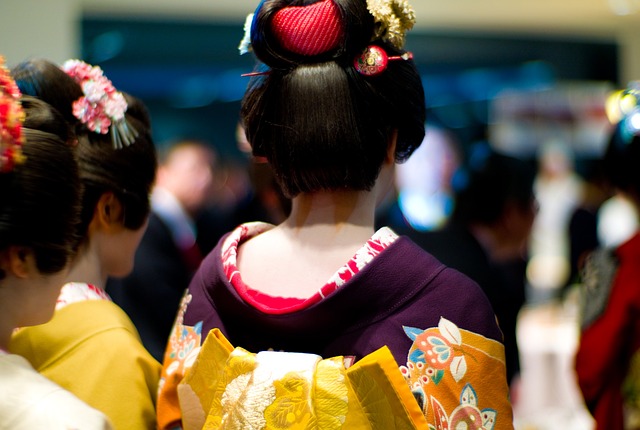
Kyoto’s winters are particularly harsh, so Maiko’s winter attire is designed not only to be elegant but also to provide warmth.
Their hairstyles are adorned with pine, bamboo, and plum hairpins, while seasonal events like Kyoto’s Hanatouro and New Year’s celebrations bring the season to life, emphasizing warmth, resilience, and the festive spirit with traditions like mochi pounding and kagami biraki (the ceremonial breaking of a sake cask).
Description of winter attire and hairstyles for Maiko
In winter, Maiko’s attire features deep, rich colors such as deep purple, indigo, and crimson, often adorned with patterns of snowflakes or plum blossoms.
Their hairstyles are decorated with hairpins representing pine, bamboo, and plum, symbolizing resilience and hope.
During the New Year, Maiko wear black kimono known as “kuro-montsuki,” which are formal garments only worn on special occasions like store openings or the New Year.
In December, hairpins feature kabuki actor nameplates, with each Maiko visiting the theater to have their favorite actor’s name inscribed on the wooden plate.
January’s hairpins are more festive, showcasing pine, bamboo, and plum, along with a special hairpin adorned with rice ears and doves.
It is believed that if someone special writes on the dove’s eye, the Maiko’s wishes will come true.
Key events and festivals in winter
Winter in Kyoto is filled with preparations for the year-end and New Year celebrations.
Highlights include the “Kaomise Souken,” where all the Maiko and Geiko of the district attend a kabuki performance, and the end-of-year greetings.
After the New Year, events such as the opening ceremony of the Maiko school, New Year’s greetings, Setsubun bean-throwing, and dedication dances keep the calendar busy.
Kyoto’s Hanatouro festival, where the streets and temples are illuminated by lanterns, creates a magical atmosphere.
Special customs and traditions during this season
During winter, Maiko participate in traditional activities like mochi pounding.
December also marks “Koto-hajime,” a day when Maiko and Geiko visit their dance instructors to express gratitude and offer New Year’s greetings for the upcoming year.
Timeless Elegance: The Seasonal Splendor of Maiko Fashion
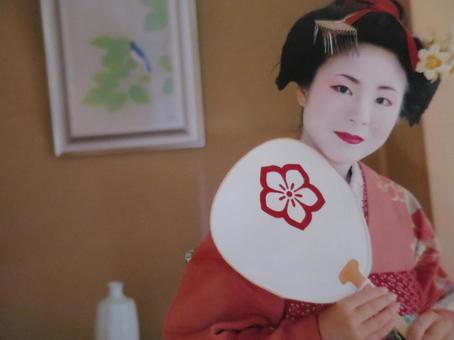
Throughout the year, Maiko fashion reflects the beauty and diversity of Japan’s seasons.
Each change in attire and hairstyle tells a story of tradition, nature, and cultural significance.
The Maiko’s ability to adapt and embody the spirit of each season showcases their dedication to preserving the elegance and artistry of the Geisha tradition.
As the seasons change, so too does the timeless allure of Maiko fashion, offering a glimpse into the heart of Japanese culture and its harmonious relationship with nature.


